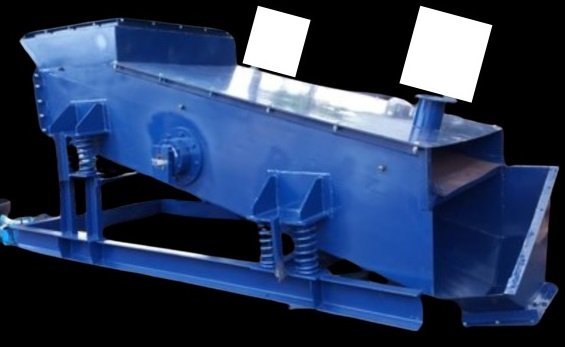The Ultimate Guide to Vibrating Screens: Types, Applications, and Benefits
Discover everything you need to know about vibrating screens, including types, applications, benefits, and how to choose the right one for your needs. Read our complete guide now.

Vibrating screens are essential equipment used in various industries, including mining, construction, pharmaceuticals, and food processing. They help separate materials based on size and composition, improving efficiency and productivity. This guide explores everything about vibrating screens, including their types, benefits, and applications, helping you make an informed decision when choosing the right one for your business.
What is a Vibrating Screen?
A vibrating screen is a mechanical device that uses vibration to separate materials. It consists of a screening surface with varying openings, allowing materials of different sizes to pass through. These machines are widely used in different industries for screening and grading materials efficiently.
Types of Vibrating Screens
1. Linear Vibrating Screens
Linear vibrating screens use linear motion to transport materials across the screening surface. They are ideal for dewatering, separating, and grading bulk materials.
2. Circular Vibrating Screens
These screens use a circular motion to classify materials. They are commonly used in mining and aggregate industries for screening heavy-duty materials.
3. Elliptical Vibrating Screens
Elliptical screens combine the advantages of both linear and circular vibrating screens. They offer enhanced efficiency and performance for complex screening applications.
4. High-Frequency Vibrating Screens
These screens operate at higher frequencies to separate fine materials. They are often used in the pharmaceutical and food processing industries.
5. Trommel Screens
Trommel screens use a rotating drum to filter materials. They are often used in waste management and recycling applications.
6. Gyratory Vibrating Screens
Gyratory screens use a gyrating motion for screening. They provide precise separation and are ideal for industries requiring high accuracy.
Applications of Vibrating Screens
Vibrating screens are used in various industries for multiple applications:
-
Mining Industry: Screening ores, minerals, and aggregates.
-
Construction Industry: Separating sand, gravel, and crushed stones.
-
Food Processing: Sorting and grading food materials like grains and spices.
-
Pharmaceutical Industry: Screening powdered medicines and chemicals.
-
Recycling Industry: Sorting waste materials and enhancing recycling efficiency.
Benefits of Using Vibrating Screens
1. Enhanced Screening Efficiency
Vibrating screens provide accurate and efficient separation of materials, reducing waste and improving productivity.
2. Versatility
They are suitable for various applications and industries, offering customizable options.
3. Cost-Effectiveness
Using vibrating screens reduces material loss, lowers operational costs, and enhances overall efficiency.
4. Durability and Low Maintenance
Modern vibrating screens are built with high-quality materials, ensuring durability and minimal maintenance requirements.
5. Improved Material Quality
These screens ensure the separation of impurities, improving the quality of screened materials.
Factors to Consider When Choosing a Vibrating Screen
1. Material Type and Size
Understanding the type and size of materials being screened helps determine the ideal screen type.
2. Screening Capacity
Choose a screen with a capacity that meets your production requirements.
3. Vibrating Mechanism
Different vibrating screens use varied mechanisms, including linear, circular, and elliptical motions.
4. Screen Surface Type
Selecting the right screen surface (mesh, perforated plates, etc.) affects efficiency and performance.
5. Maintenance Requirements
Opt for a screen that offers easy maintenance and long service life.
How to Maintain Vibrating Screens for Long-Term Performance
1. Regular Inspection
Inspect the screen regularly for wear and tear to prevent unexpected breakdowns.
2. Proper Cleaning
Clean the screen to avoid clogging and maintain efficiency.
3. Lubrication
Ensure all moving parts are adequately lubricated to reduce friction and wear.
4. Tighten Loose Components
Regularly check and tighten bolts and nuts to ensure stable performance.
5. Replace Worn-Out Parts
Replace damaged screens, springs, and other components promptly to maintain efficiency.
FAQs About Vibrating Screens
1.What industries use vibrating screens?
Vibrating screens are widely used in industries such as mining, construction, food processing, pharmaceuticals, and recycling.
2. How do vibrating screens improve material separation?
They use vibration to separate materials based on size and composition, enhancing efficiency and reducing waste.
3. What is the lifespan of a vibrating screen?
The lifespan depends on factors like material quality, maintenance, and usage, but well-maintained screens can last several years.
4. Can vibrating screens handle wet materials?
Yes, some vibrating screens are designed for wet screening applications, such as dewatering screens.
5. What are the main components of a vibrating screen?
Key components include the screen surface, vibrating mechanism, frame, motor, and supporting structure.
Conclusion
Vibrating screens are essential tools for material separation in various industries. Understanding the different types, applications, and benefits helps businesses choose the right vibrating screen for their needs. Regular maintenance ensures longevity and efficiency, making vibrating screens a valuable investment in any industry. Whether you're in mining, construction, food processing, or pharmaceuticals, incorporating the right vibrating screen can enhance productivity and operational efficiency.
What's Your Reaction?















